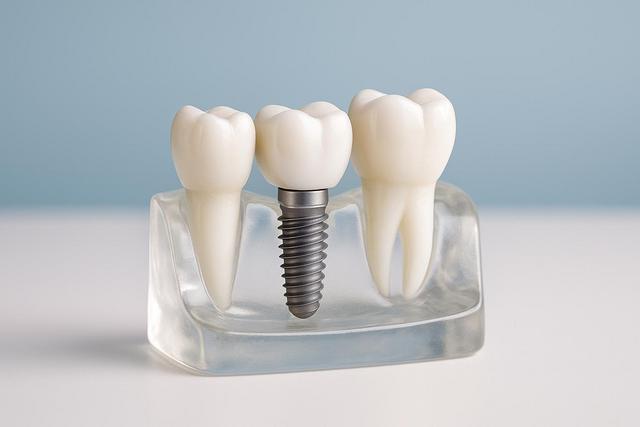
Dental Implants: Benefits, Longevity, and Everyday Care
Introduction
Tooth loss affects how you eat, speak, and smile—but it also influences jawbone health and facial balance. Dental implants are among the most reliably studied options to replace missing teeth, and they’re designed to look and feel like natural teeth while helping preserve bone. For many adults, implants can be a long-lasting solution, provided they’re planned carefully and maintained well. This article walks you through what to expect, how long implants tend to last, what they cost, what daily care involves, and how they stack up against other options—so you can have an informed conversation with your dentist or specialist.
What dental implants are and how they work
An implant is a small post placed in the jawbone that acts like an artificial tooth root. Once the bone heals and bonds to the implant (osseointegration), a connector called an abutment is attached, and then a custom crown is secured on top. As the American Dental Association’s MouthHealthy explains, “Dental implants are a popular and effective way to replace missing teeth and are designed to blend in with your other teeth” [1]. The Mayo Clinic notes that most implants succeed, especially when placed in healthy bone and cared for properly [2].
Implants can replace a single tooth, support a bridge, or help stabilize a full-arch prosthesis. Materials vary (titanium is common; zirconia is an alternative). Your dentist or specialist will evaluate bone volume, gum health, bite alignment, medications, and lifestyle factors such as smoking. The surgical placement itself is typically an in‑office procedure using local anesthesia with optional sedation. Healing times range from same‑day temporaries to several months before the final tooth is attached—depending on bone quality and whether grafting is needed [2].
Longevity and success rates you can expect
Well‑planned implants have strong long‑term performance. A review summarized by the National Elf Service reported a cumulative mean implant survival of 94.6% over up to 20 years, with most failures occurring after the prosthetic was placed and the implant was in function [3]. Day‑to‑day success depends on factors like bone quality, bite forces, hygiene, and consistent follow‑up. The American Academy of Periodontology (AAP) also underscores that implants—like teeth—can develop inflammation around them; early, reversible peri‑implant mucositis can progress to peri‑implantitis with bone loss if not managed [4]. That’s why regular maintenance matters.
What does this look like in real life? Consider a patient who lost a first molar in his early 40s due to a cracked tooth. After a careful workup, he received a single implant and crown. He returns every six months for cleanings, uses an interdental brush nightly, and wears a nightguard for clenching. Ten years later, his implant remains comfortable and functional—because he addresses the same risk factors that can harm natural teeth. This experience echoes Mayo Clinic guidance: keep the area clean, see your dentist regularly, and avoid damaging habits like chewing ice or hard candy [2].
Costs, insurance, and how to budget
Costs vary by region, case complexity, and the number of implants. A practical range for a single implant with abutment and crown often falls between about $3,000 and $7,000 in the U.S. [8]. Consumer reports of full treatment combinations show broad ranges, reflecting added procedures like grafting or sinus lifts [9]. Some national dental groups publish typical prices for their patients; for example, one large network cites averages for single implants and full‑arch care to help set expectations (always confirm local pricing) [14].
Insurance coverage for implants is mixed. Some plans cover part of major restorative procedures (often up to plan limits), while others exclude implants and cover alternatives like bridges or dentures. Pre‑authorization helps you see what’s covered and what isn’t [6]. Many carriers recommend requesting a pre‑treatment estimate and staying in‑network when possible [7].
| Common cost components (U.S.) | Typical range | Notes |
|---|---|---|
| Single implant (device + surgery) | $1,500–$3,500 | Device and placement only; total rises with abutment/crown [8] |
| Abutment + crown | $1,500–$2,500 | Varies by material and lab |
| Bone graft (site dependent) | $600–$1,500 | Additional healing time may apply [8] |
| Sinus lift | $1,500–$2,500 | Upper jaw cases only [8] |
| Implant‑supported bridge | $4,000–$16,000 | Depends on span and number of implants [9] |
| Implant denture (per arch) | ~$5,700–$12,900 | Network‑reported averages vary by location [14] |
| Fixed full‑arch (per arch) | ~$14,600–$29,900 | Planning, surgery, and prosthesis included in many quotes [14] |
Budget moves: use HSA/FSA funds where eligible, compare in‑network vs. out‑of‑network estimates, and request a line‑item treatment plan so you can see the impact of each step (extraction, grafting, implant, abutment, crown). If your plan excludes implants, a pre‑authorization still clarifies coverage for related services (extractions, CT imaging, temporary tooth) [6] [7].
Everyday care and maintenance: habits that protect your investment
Your implants should be cleaned like natural teeth—twice‑daily brushing and daily interdental cleaning—plus regular professional maintenance. Cochrane Oral Health’s review found that using floss or interdental brushes in addition to toothbrushing may reduce gingivitis or plaque, with interdental brushes possibly more effective than floss (low‑certainty evidence) [5]. The AAP emphasizes monitoring for signs of peri‑implant disease—bleeding, tenderness, or changes you notice when cleaning—because early care is simpler and more successful [4]. Mayo Clinic adds practical tips: avoid chewing hard items that can crack crowns, and keep up with checkups and cleanings [2].
- Daily: soft‑bristle or powered brush, low‑abrasive toothpaste, and an interdental brush sized by your hygienist.
- Weekly: inspect the gumline around the implant in a mirror for redness or bleeding; note any looseness or clicking of parts.
- Ongoing: if you clench or grind, use a custom nightguard to protect the crown and opposing teeth.
- Lifestyle: smoking increases the risk of complications; ask your care team about cessation support and alternate timelines.
Implants vs. bridges vs. dentures: a practical comparison
Choosing among options involves trade‑offs in longevity, comfort, maintenance, and cost. Discuss your bite, bone, and goals with your dentist; the matrix below can jump‑start that conversation.
| Feature | Dental implant (single) | Fixed bridge | Removable denture (partial/full) |
|---|---|---|---|
| Longevity (typical) | High—10+ years with maintenance [3] | Moderate—often 7–15 years (depends on supporting teeth) | Moderate—relines/replacement over time |
| Jawbone preservation | Helps stimulate bone locally | No stimulation at missing site | No stimulation at missing sites |
| Tooth preparation needed | None for neighboring teeth | Requires shaping adjacent teeth | None |
| Chewing efficiency | Similar to natural tooth | Good when well‑fitted | Varies; may move without implant support |
| Daily care | Brush + interdental cleaning around implant [5] | Brush + thread under bridge | Remove and clean; keep tissues healthy |
| Typical cost (U.S.) | ~$3,000–$7,000 per tooth [8] | ~$2,000–$5,000 (span and materials vary) | Partial: ~$800–$3,100; full varies widely |
| Esthetics | Custom crown matches nearby teeth [1] | Good with careful design | Good; may show acrylic borders |
| Who places it? | General dentist or specialist (periodontist/OMS) | General dentist/restorative dentist | General dentist/prosthodontist |
Provider choice matters for complex cases. Surveys suggest many consumers prefer oral and maxillofacial surgeons for the surgical phase of implants—training, referrals, and total out‑of‑pocket costs were key decision factors [10].
FAQs, conclusion, and next steps
Dental Implant FAQs
Do implants ever fail?
Yes—though uncommon when risk factors are controlled. Early failure is often related to healing; later failure may relate to overload or peri‑implant disease. Consistent maintenance reduces risk [4] [2].
How long do implants last?
Many function for a decade or longer; reviews show high survival beyond 10 years when patients follow maintenance plans [3].
Are implants right for smokers or people with diabetes?
These conditions increase risk. Your team may recommend smoking cessation, tighter glycemic control, and a slower timeline before proceeding [1].
What’s the difference between “success” and “survival”?
Survival means the implant remains in place; success adds health criteria (bone levels, absence of inflammation) and function. Maintenance helps convert survival into long‑term success [4].
Will insurance cover my implant?
Some plans cover part of the treatment up to annual maximums; others exclude implants but cover related steps. Always request pre‑authorization and a pre‑treatment estimate [6] [7].
Conclusion and recap: Implants can be a durable, natural‑feeling way to replace missing teeth. High 10‑year survival is achievable when planning is personalized, habits support gum health, and you stay on a structured maintenance schedule. Use the cost table to budget, compare providers, and secure pre‑authorizations before treatment. Then protect your investment with consistent home care and regular professional cleanings.
Find local services (enter your ZIP code): Use ADA’s Find‑A‑Dentist to locate general dentists and specialists near you [12], or the AAOMS directory to search for oral and maxillofacial surgeons by ZIP [13].
Explore online booking and pricing: If you prefer to compare nationwide pricing and request consultations online, review transparent implant pricing pages from large networks and then contact your local office for an in‑person estimate [14].
Websources
- American Dental Association – Dental Implants (MouthHealthy)
- Mayo Clinic – Dental implant surgery: overview and care
- National Elf Service – Dental implants: high survival over 10+ years
- American Academy of Periodontology – Peri‑implant diseases (patient info)
- Cochrane Oral Health – Interdental cleaning devices review
- Investopedia – Getting dental implants covered by insurance
- Delta Dental – All about dental implants (coverage pointers)
- GoodRx – Dental implant cost guide
- CostHelper – Dental implant cost ranges
- AAOMS – Survey on preferred providers for implants
- ADA – Find‑A‑Dentist (ZIP search)
- AAOMS – Find a Surgeon (ZIP search)
- Aspen Dental – Implant pricing overview


